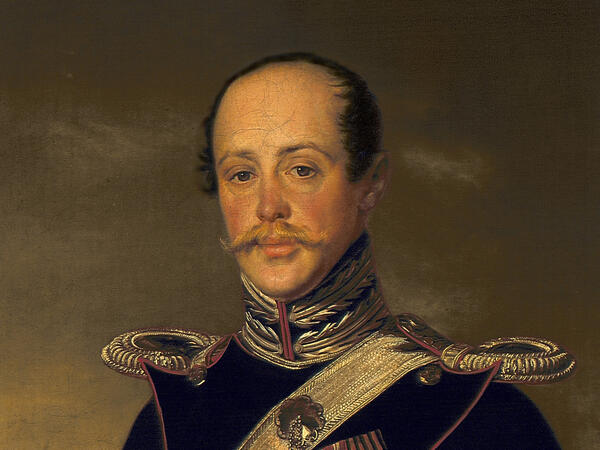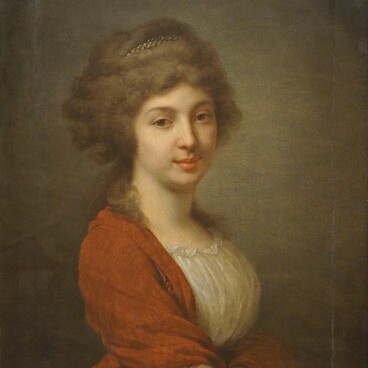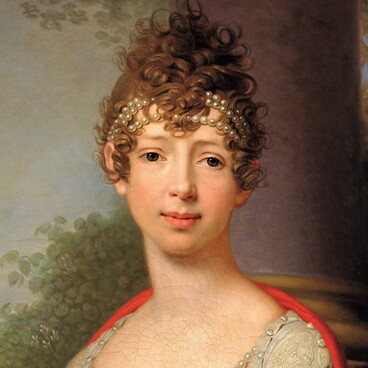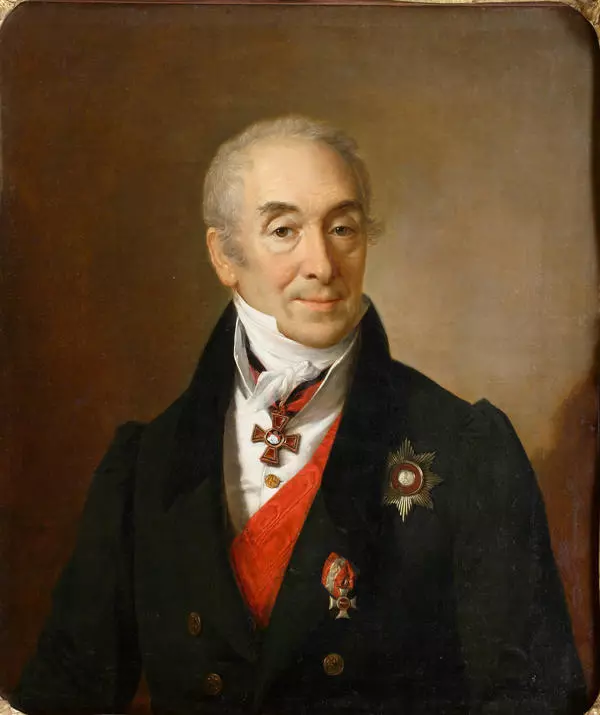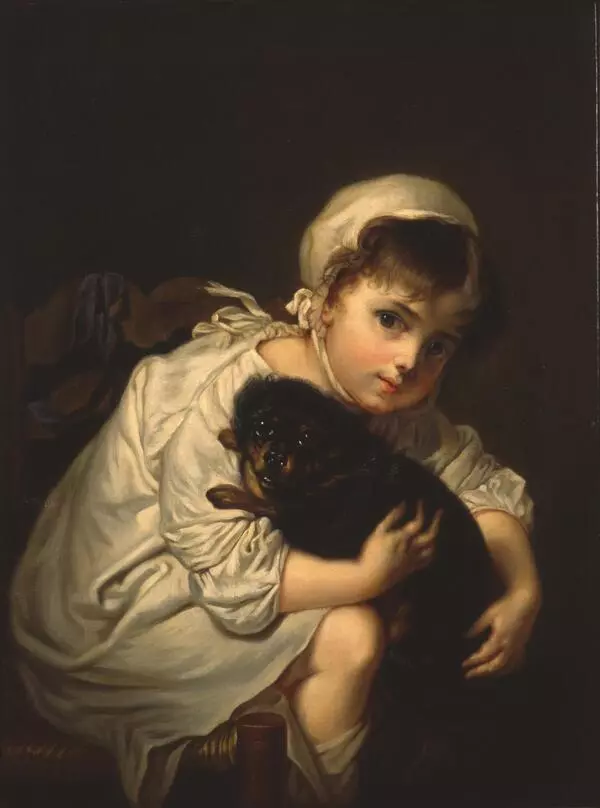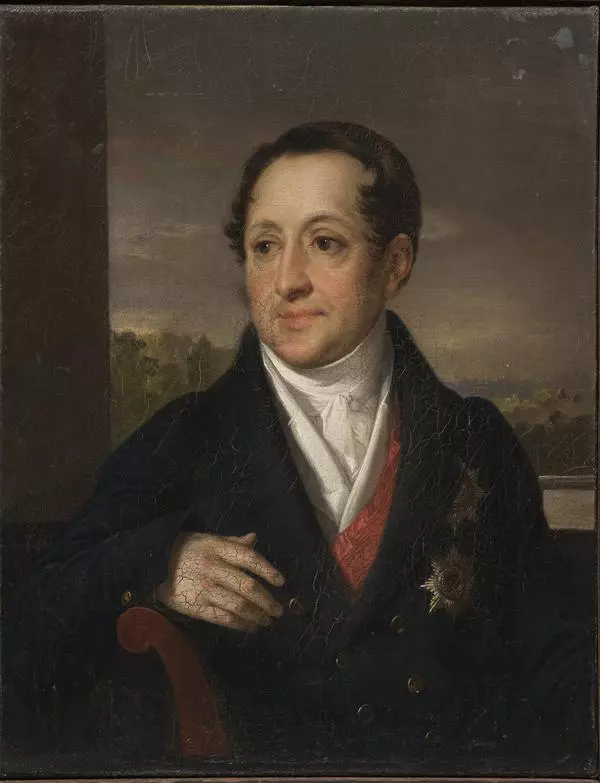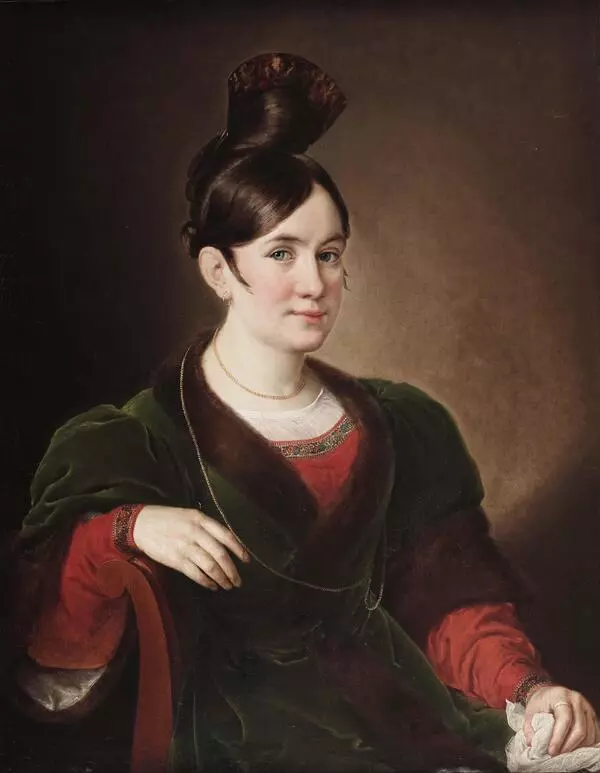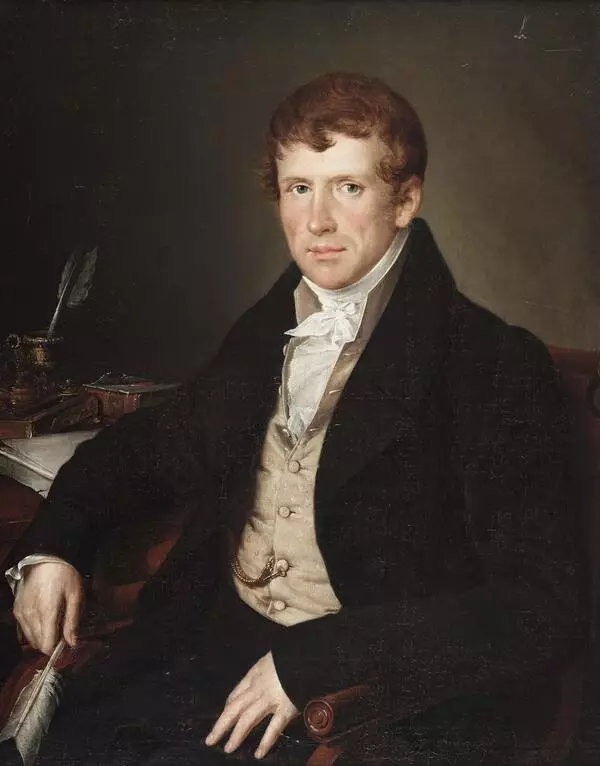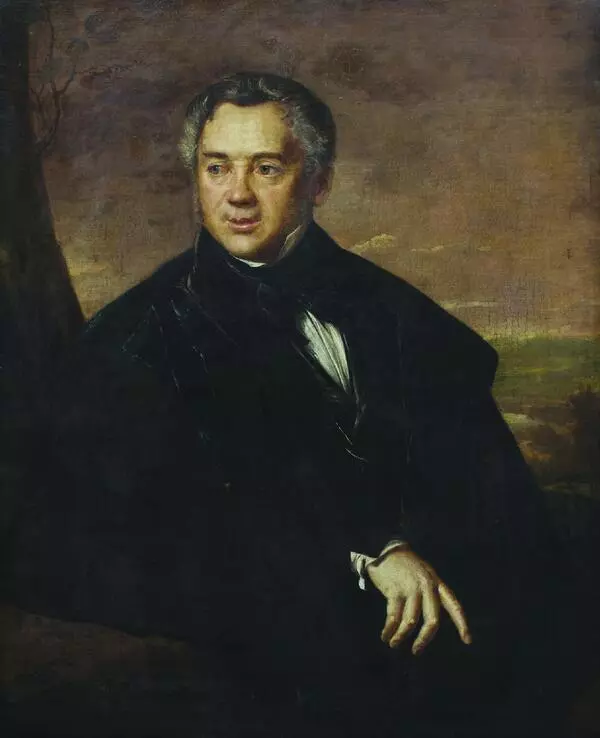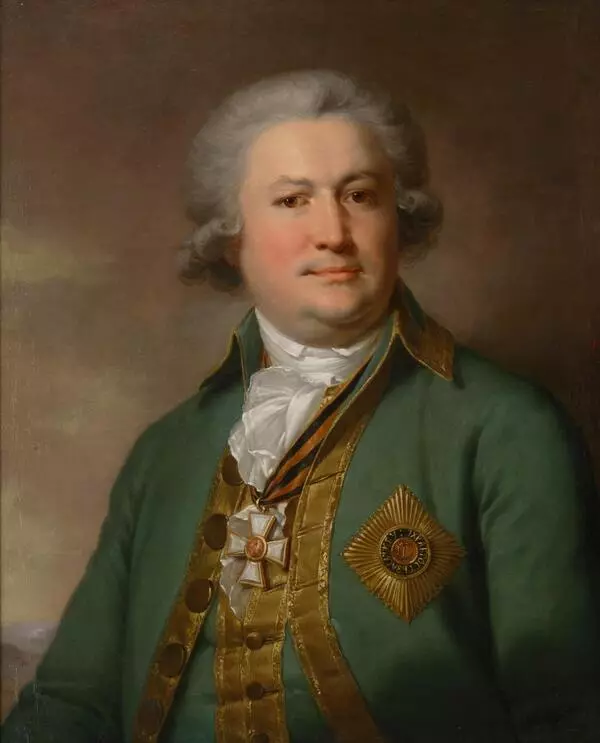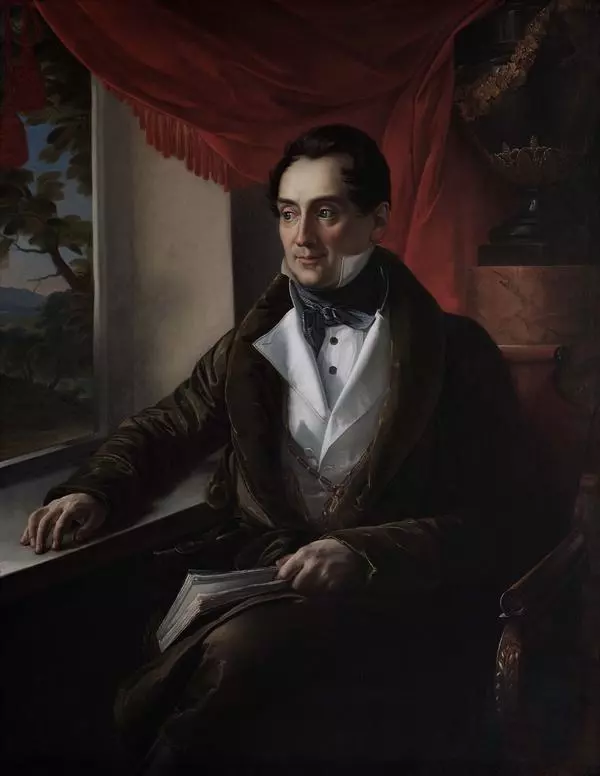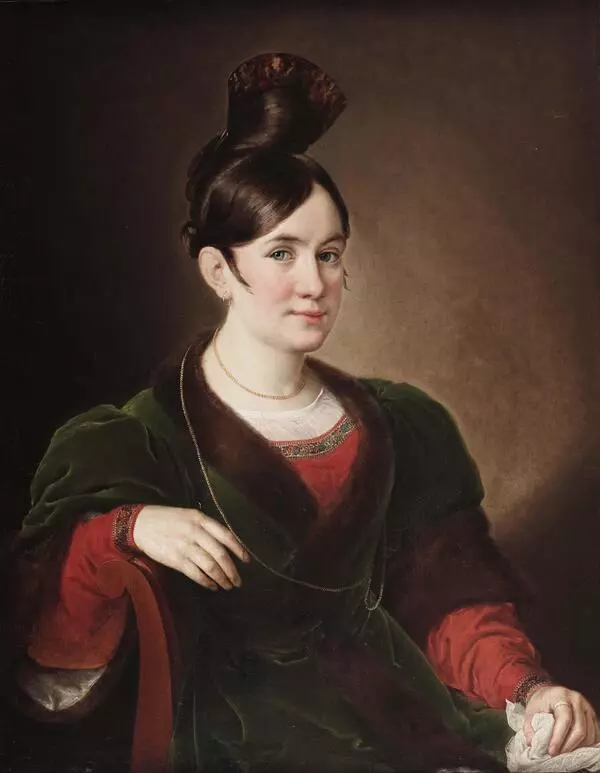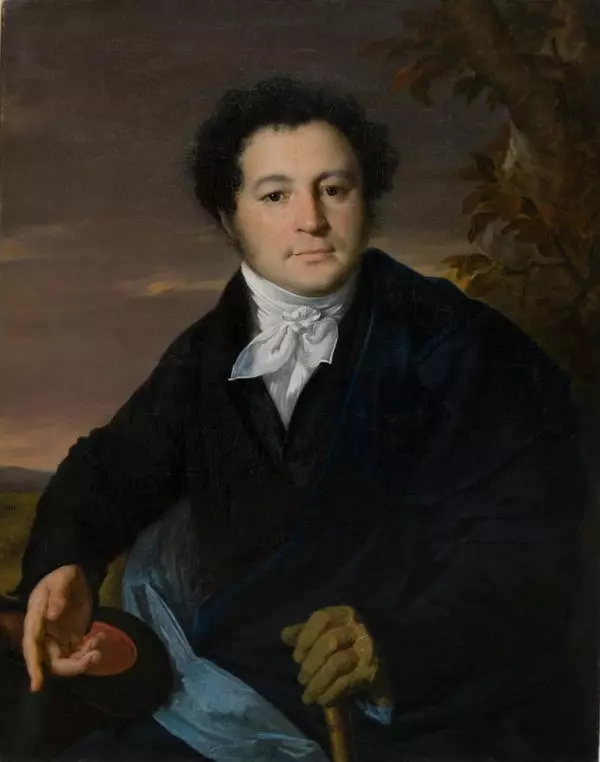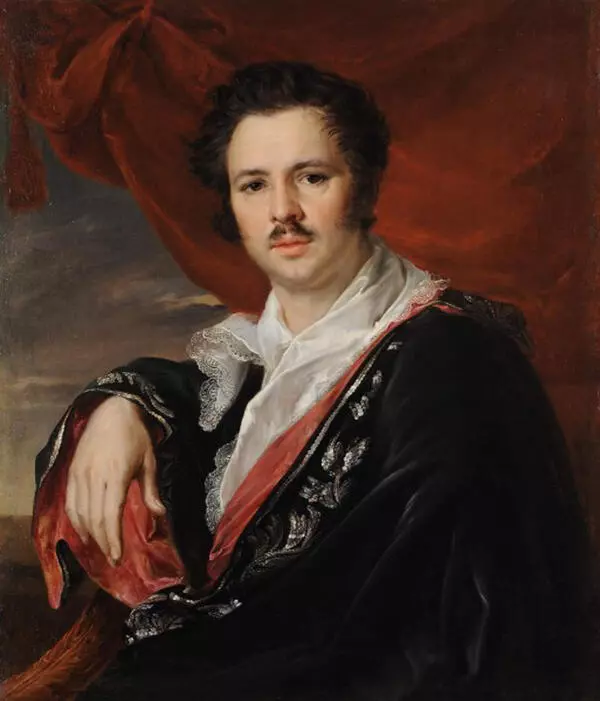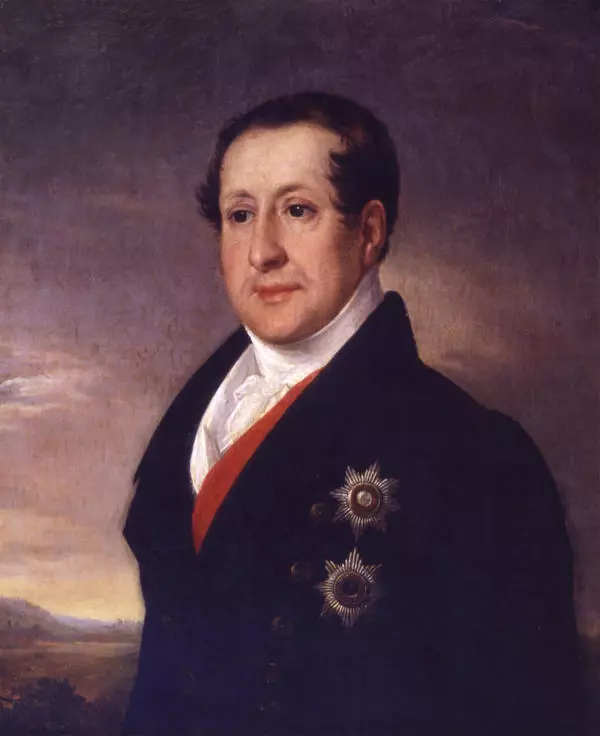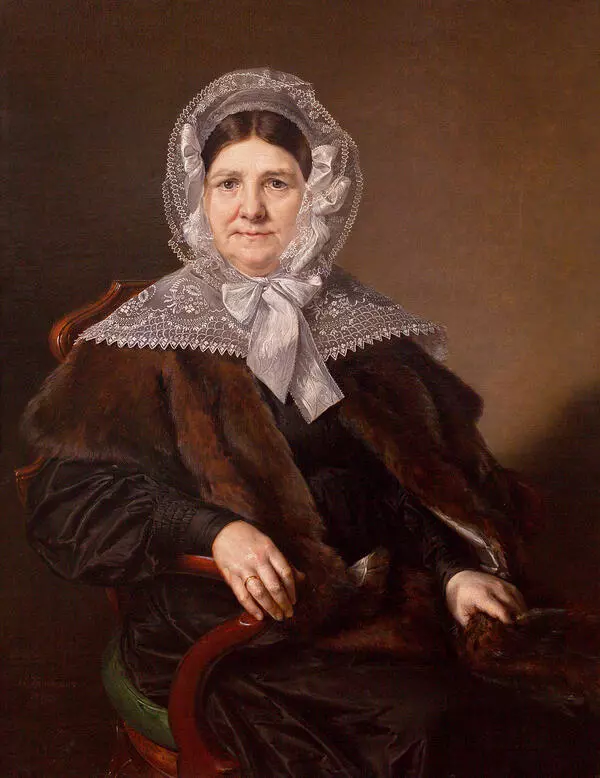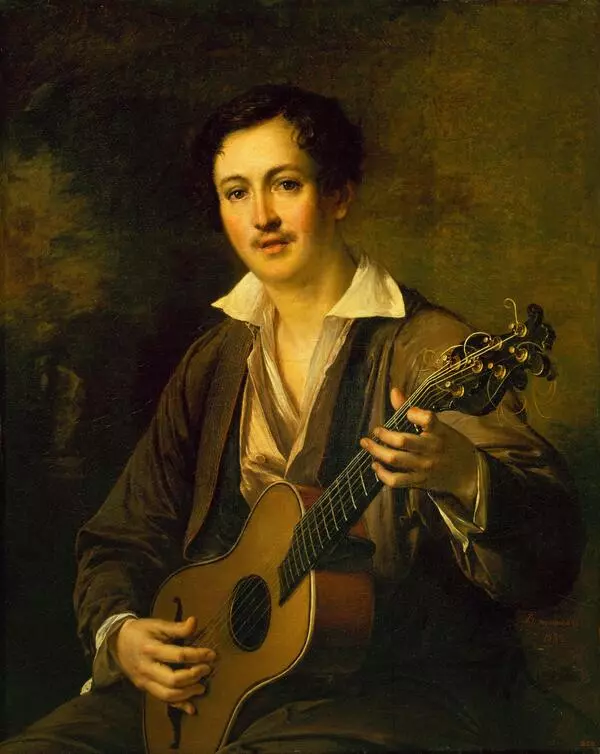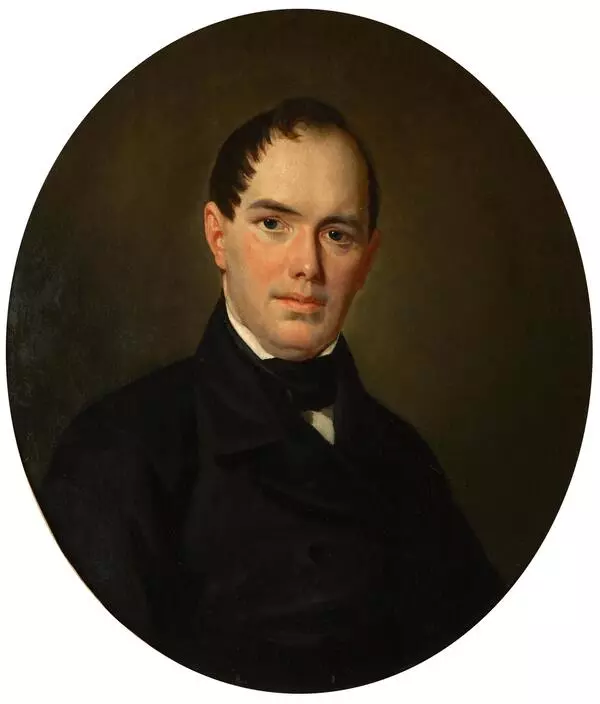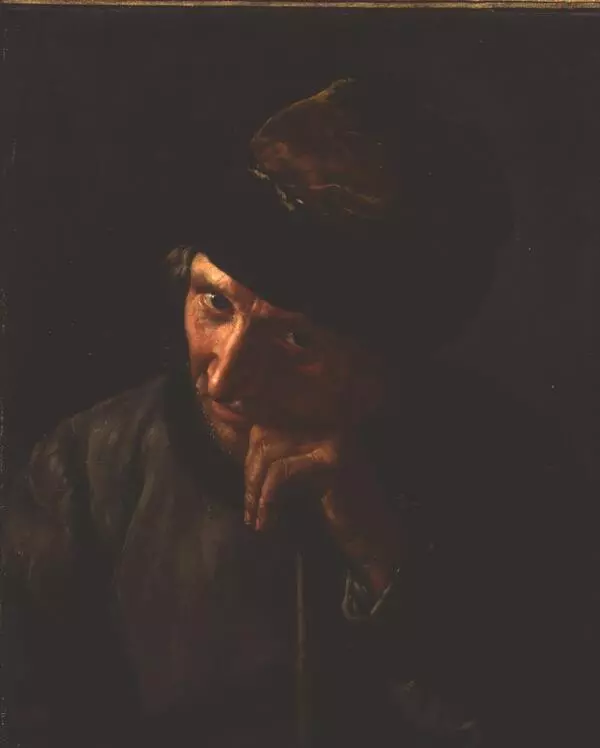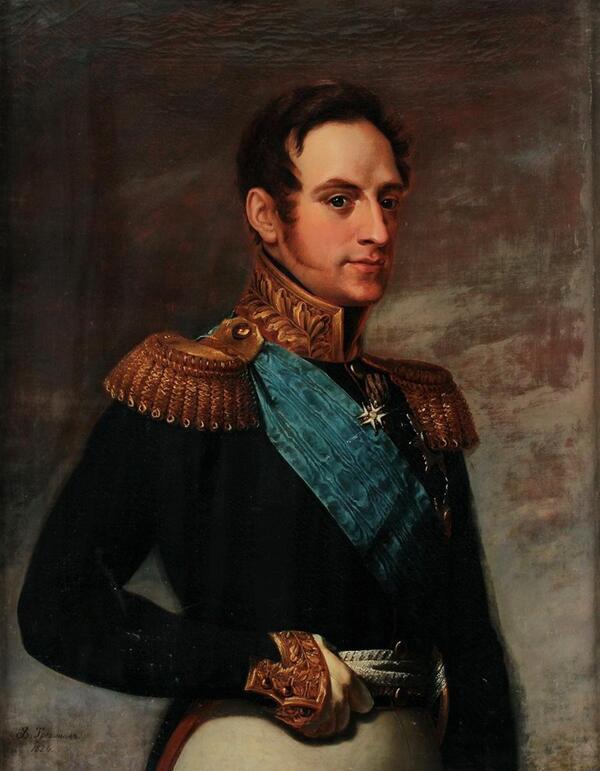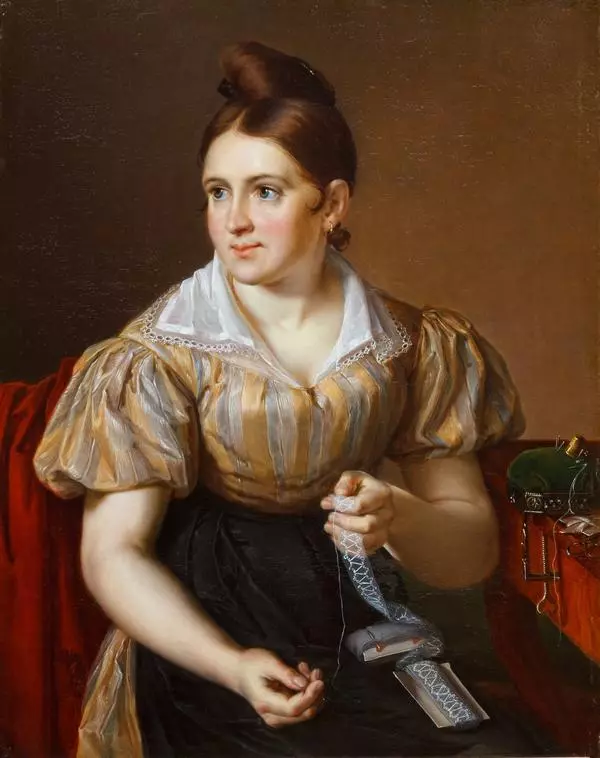The museum collection displays a portrait of Feodor Glebov-Streshnev created by Vasily Tropinin. The features of the representative and cabinet portrait types are combined in this work. The interior and background do not distract from the person portrayed. Tropinin depicted a military man with captain’s epaulets. Most likely, Glebov-Streshnev was in this rank when Tropinin created the portrait for the family gallery at his Pokrovskoye-Streshnevo estate, which he inherited in 1837.
The Glebov family was historically connected to Kuban. In 1022, Mstislav, the Prince of Tmutarakan and son of Vladimir the Great (ruler who Christianized the Kievan Rus), defeated the leader of the Kassogians (Circassians) and the Yasses Rededya in a heroic duel and took his wife and sons captive. Later, he married his own daughter to one of Rededya’s sons, Senuduyk. In 1807, the Governing Senate of Russia examined the family’s “pedigree fairy tale” and granted it a coat of arms with a griffin, as they were deemed to be descendants of a Circassian prince, and also enlisted the family in the “Velvet Book” — a register of genealogies of the most ancient surnames of boyars and Russian gentry.
The history of the Streshnevs was not as ancient as that of the Glebovs. Lukyan Streshnev, an odnodvorets (a representative of the Russian gentry who owned one homestead) from Mozhaisk, was a farmer, but his life changed when Tsar Michael I married his daughter Eudoxia on January 29, 1626. Prince Dmitry Pozharsky played the role of the father of the bride at the wedding. Thus, Eudoxia Streshneva became the grandmother of Peter I, and Lukyan Streshnev himself was granted a high boyar’s hat — a sign of privilege, a rich land estate near Moscow and a coat of arms with a ‘happy’ horseshoe.
In order to keep the surname, Feodor Glebov-Streshnev, after the marriage of his niece Evgeniya, requested ‘the right for her husband to be called Prince Shakhovskoy-Glebov-Streshnev’. In 1866, Emperor Alexander II gave his highest permission and granted the family a coat of arms.
Painter Vasily Tropinin was born in a family of serfs owned by Count Irakli Morkov. Tropinin’s talent for painting was noticed early, however, he was sent to be an apprentice of a pastry chef. Morkov’s cousin convinced him to send the gifted young man to the Imperial Academy of Arts.
The future painter studied in the studio of famous artist Stepan Schukin. In 1804, Tropinin presented a painting of his for the first time at an academic exhibition. His artwork was praised by the associate rector of the Academy Ivan Akimov and Empress Maria Feodorovna herself. The president of the Academy, Count Alexander Stroganov, promised to help him become free, as he was one of the best students.
However, Count Morkov recalled Vasily to his estate. Tropinin became a free man only in 1823: the count released him after a prolonged societal pressure. The painter presented his painting ‘The Lace Maker’ and other works to the Council of the Academy of Arts, received the title of appointed artist, and the following year he became academician. The artist died at the age of 81.
The Glebov family was historically connected to Kuban. In 1022, Mstislav, the Prince of Tmutarakan and son of Vladimir the Great (ruler who Christianized the Kievan Rus), defeated the leader of the Kassogians (Circassians) and the Yasses Rededya in a heroic duel and took his wife and sons captive. Later, he married his own daughter to one of Rededya’s sons, Senuduyk. In 1807, the Governing Senate of Russia examined the family’s “pedigree fairy tale” and granted it a coat of arms with a griffin, as they were deemed to be descendants of a Circassian prince, and also enlisted the family in the “Velvet Book” — a register of genealogies of the most ancient surnames of boyars and Russian gentry.
The history of the Streshnevs was not as ancient as that of the Glebovs. Lukyan Streshnev, an odnodvorets (a representative of the Russian gentry who owned one homestead) from Mozhaisk, was a farmer, but his life changed when Tsar Michael I married his daughter Eudoxia on January 29, 1626. Prince Dmitry Pozharsky played the role of the father of the bride at the wedding. Thus, Eudoxia Streshneva became the grandmother of Peter I, and Lukyan Streshnev himself was granted a high boyar’s hat — a sign of privilege, a rich land estate near Moscow and a coat of arms with a ‘happy’ horseshoe.
In order to keep the surname, Feodor Glebov-Streshnev, after the marriage of his niece Evgeniya, requested ‘the right for her husband to be called Prince Shakhovskoy-Glebov-Streshnev’. In 1866, Emperor Alexander II gave his highest permission and granted the family a coat of arms.
Painter Vasily Tropinin was born in a family of serfs owned by Count Irakli Morkov. Tropinin’s talent for painting was noticed early, however, he was sent to be an apprentice of a pastry chef. Morkov’s cousin convinced him to send the gifted young man to the Imperial Academy of Arts.
The future painter studied in the studio of famous artist Stepan Schukin. In 1804, Tropinin presented a painting of his for the first time at an academic exhibition. His artwork was praised by the associate rector of the Academy Ivan Akimov and Empress Maria Feodorovna herself. The president of the Academy, Count Alexander Stroganov, promised to help him become free, as he was one of the best students.
However, Count Morkov recalled Vasily to his estate. Tropinin became a free man only in 1823: the count released him after a prolonged societal pressure. The painter presented his painting ‘The Lace Maker’ and other works to the Council of the Academy of Arts, received the title of appointed artist, and the following year he became academician. The artist died at the age of 81.

